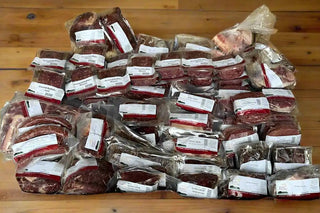Curing and Smoking: Traditional Methods of Meat Preservation
Before refrigeration became commonplace, humans had to find ways to preserve food, especially meat, so that it would last through harsh winters or long journeys. Two of the oldest and most effective methods developed for meat preservation are curing and smoking. These techniques not only extend the shelf life of meat but also enhance its flavor, making them as popular today among food aficionados as they were necessary for our ancestors’ survival.
The Art of Curing Meat
Curing is a method that has been used since ancient times, and it involves the application of salt, sugar, and nitrates or nitrites. The process draws moisture out of the meat, creating an environment that is inhospitable to bacteria. Historically, meat would be buried in salt or soaked in a brine solution. Today, the process is much the same, although it is more controlled and often includes a blend of spices for additional flavor.
The curing process can be divided into two types: dry curing and wet curing. Dry curing involves rubbing salt and seasoning directly onto the meat, which is then left to cure over a period of weeks or months. Wet curing, also known as brining, involves submerging the meat in a saltwater solution, sometimes with additional flavorings. Both methods are effective, although they produce different textures and flavors.
The Smoky Science of Smoking Meat
Smoking meat is another ancient preservation technique that imparts a distinctive flavor, which can range from subtle to robust, depending on the type of wood used and the duration of smoking. Smoking works by slowly cooking the meat at low temperatures in an environment filled with wood smoke. The smoke contains compounds that have antimicrobial and antioxidant properties, which help preserve the meat.
There are two main methods of smoking: cold smoking and hot smoking. Cold smoking is done at temperatures below 30°C (86°F) and can take days or even weeks. It’s mainly used for flavor since it doesn’t cook the meat. Hot smoking, on the other hand, is done at higher temperatures between 52°C (125°F) and 80°C (176°F), which cooks the meat as it smokes, making it safe to eat without further cooking.
Combining Curing and Smoking
Often, curing and smoking are used in combination to preserve and flavor meats. Many traditional charcuterie products, like hams and sausages, are both cured and smoked. The curing process draws out moisture and adds flavor, while smoking further preserves the meat and adds the smoky taste that is so prized in many cultures.
Health Considerations and Modern Adaptations
While curing and smoking meats can create delicious results, it's important to consider health implications. Consuming high amounts of salt and nitrates, which are often used in the curing process, can be detrimental to health. Modern adaptations of these methods sometimes use celery juice as a natural source of nitrates and focus on reducing the overall salt content.
Conclusion
Curing and smoking are not just preservation methods; they are time-honored traditions that have been refined into a culinary art form. They speak to a time when food preservation was a necessity for survival, and today they are celebrated for the depth of flavor they add to meats. Whether you’re a home cook experimenting with these techniques or a connoisseur of fine charcuterie, the legacy of cured and smoked meats is a rich one, full of history and taste.
In the modern age, while we may not need to cure and smoke meats for preservation, these methods continue to be a testament to our culinary heritage and provide an unmatched depth of flavor that continues to be celebrated in kitchens and at tables around the world.



